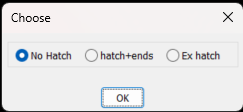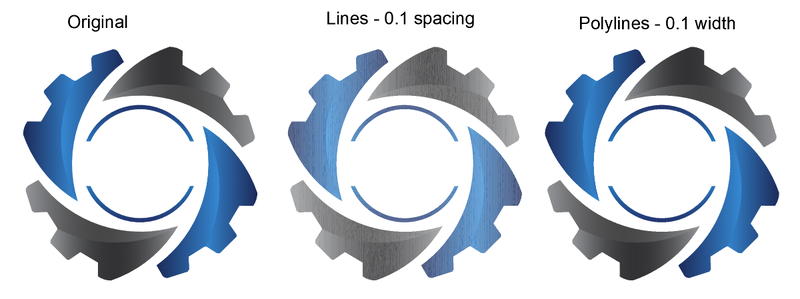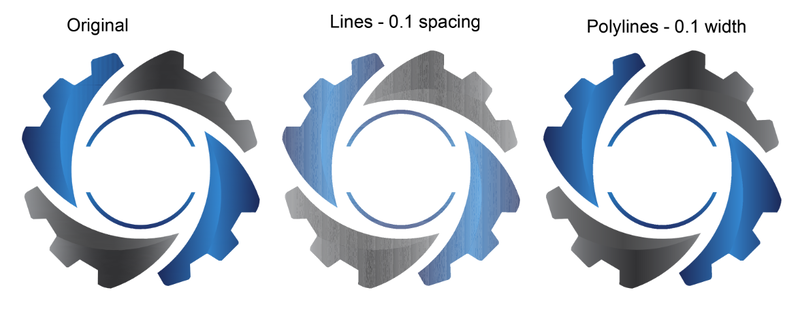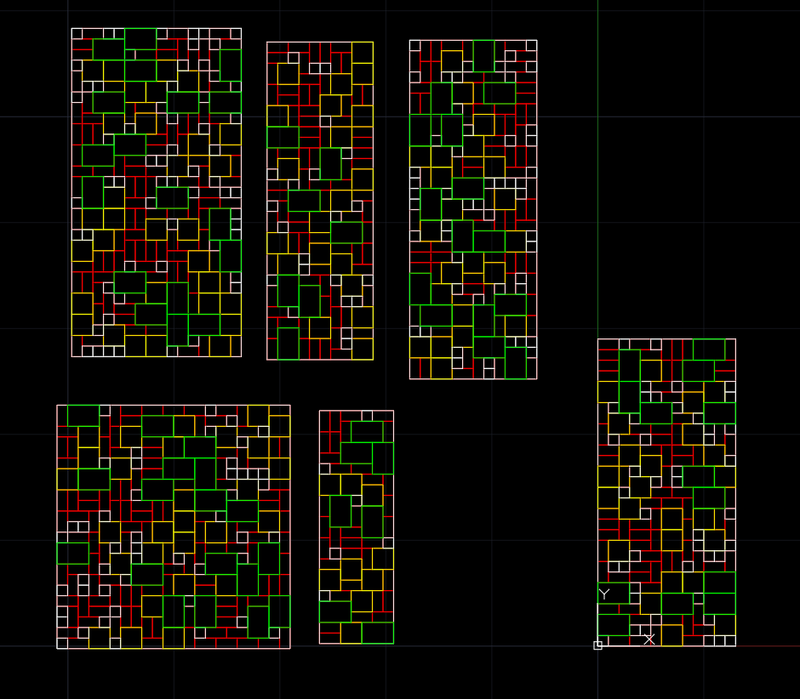Leaderboard
Popular Content
Showing content with the highest reputation on 08/17/2023 in all areas
-
Think this should do it (defun AT:NumFix (s n) ;; Fix number string with leading zeros ;; s - Number string to fix ;; n - Number of characters for final string ;; Alan J. Thompson, 10.29.09 ;; (AT:NumFix i 2) i= 5 = 05 (if (< (strlen s) n) (AT:NumFix (strcat "0" s) n) s ) )3 points
-
; POINTGRID - 2023.08.17 exceed ; https://www.cadtutor.net/forum/topic/76068-point-grid-by-selecting-polyline/?do=findComment&comment=622077 ; Make point grid in closed polyline or circle. ; command : POINTGRID ; 1. Select objects to use as boundary. ; 2. Enter the x, y spacing gap value between each point. ; 3. If you want to give a margin to the inside of the boundary object, enter an offset value. ; (Enter the space bar if not necessary.) ; This code modifies PDMODE and PDSIZE variable for visibility. you can modify it to you want. (defun c:POINTGRID ( / ss x_gap y_gap base_offset ssl index ent obj minpt maxpt x_dist y_dist x_count y_count x_val y_val x_return pt_val judge point_output ) (vl-load-com) (princ "\n pick boundary polyline : ") (setq ss (ssget)) (setq x_gap (abs (getreal "\n input x gap : "))) (setq y_gap (abs (getreal "\n input y gap : "))) (setvar 'pdmode 33) (setvar 'pdsize (/ (min x_gap y_gap) 5)) (setq base_offset (getreal "\n input inside offset (if required) : ")) (if (= base_offset nil) (setq base_offset 0) (setq base_offset (abs base_offset))) (setq ssl (sslength ss)) (setq ss2 (ssadd)) (setq index 0) (repeat ssl (setq ent (ssname ss index)) (if (> base_offset 0) (progn (setq obj (EX:InsideOffsetOnce (vlax-ename->vla-object ent) base_offset)) ) (setq obj (vlax-ename->vla-object ent)) ) (vla-GetBoundingBox obj 'minpt 'maxpt) (setq minpt (vlax-safearray->list minpt)) (setq maxpt (vlax-safearray->list maxpt)) (setq x_dist (- (- (car maxpt) (car minpt)) base_offset)) (setq y_dist (- (- (cadr maxpt) (cadr minpt)) base_offset)) (setq x_count (fix (/ x_dist x_gap))) (setq y_count (fix (/ y_dist y_gap))) (setq x_val (+ (car minpt) base_offset)) (setq x_return x_val) (setq y_val (+ (cadr minpt) base_offset)) (repeat (+ y_count 1) (repeat (+ x_count 1) (setq pt_val (list x_val y_val)) (if (setq judge (@cv_inside pt_val (vlax-vla-object->ename obj) 1)) (progn ;(princ "\n ") ;(princ judge) ;(princ pt_val) ;(princ " : it's inside") ;(setq circletest (entmakex (list '(0 . "CIRCLE") (cons 10 pt_val) (cons 62 8) (cons 40 (/ (min x_gap y_gap) 5))))) (setq point_output (entmakex (list (cons 0 "POINT") (cons 100 "AcDbEntity") (cons 67 0) (cons 100 "AcDbPoint") (cons 10 pt_val ) (cons 50 0)))) (setq ss2 (ssadd point_output ss2)) ) (progn ;(princ "\n ") ;(princ judge) ;(princ pt_val) ;(princ " : it's not inside") ) ) (setq x_val (+ x_val x_gap)) ) (setq x_val x_return) (setq y_val (+ y_val y_gap)) ) (if (> base_offset 0) (vla-delete obj) ) (setq index (+ index 1)) ) (princ "\n complete") (redraw) (sssetfirst nil ss2) (princ) ) ; EX:InsideOffsetOnce - 2023.08.01 exceed ; Inside Offsets the "obj" object entered as an argument inward by "offdis" numeric value. (defun EX:InsideOffsetOnce ( obj offdis / offsetobj subloop1 subloop2 subloop1type subloop2type subloop1length subloop2length looplength ) (if (vlax-method-applicable-p obj 'offset) (progn (setq subloop1 (car (vlax-safearray->list (vlax-variant-value (vlax-invoke-method obj 'Offset (* offdis 1)))))) (setq subloop2 (car (vlax-safearray->list (vlax-variant-value (vlax-invoke-method obj 'Offset (* offdis -1)))))) (setq subloop1type (vlax-get-property subloop1 'ObjectName)) (setq subloop2type (vlax-get-property subloop2 'ObjectName)) (cond ((= subloop1type "AcDbPolyline") (setq subloop1length (vlax-get-property subloop1 'length))) ((= subloop1type "AcDbCircle") (setq subloop1length (vlax-get-property subloop1 'Circumference))) ((= subloop1type "AcDbArc") (setq subloop1length (vlax-get-property subloop1 'Radius))) ) (cond ((= subloop2type "AcDbPolyline") (setq subloop2length (vlax-get-property subloop2 'length))) ((= subloop2type "AcDbCircle") (setq subloop2length (vlax-get-property subloop2 'Circumference))) ((= subloop2type "AcDbArc") (setq subloop2length (vlax-get-property subloop2 'Radius))) ) (cond ((> subloop1length subloop2length) (vla-delete subloop1) (setq offsetobj subloop2)) ((< subloop1length subloop2length) (vla-delete subloop2) (setq offsetobj subloop1)) ((= subloop1length subloop2length) (vla-delete subloop2) (setq offsetobj subloop1)) ) offsetobj ) (progn (princ "\n This Object Cannot be Offset") ) ) ) ; Joe Burke - https://www.theswamp.org/index.php?topic=7785.msg98782#msg98782 (defun @cv_inside (PIQ Object Draw / IsPolyline Closest Start End Param P ClosestParam NextParam a1 a2 Defl @2D @Insect @Bulge @Deflect @Closest Color) ;; "LOOK, MA'... NO RAYS!" ;; @Inside.lsp v1.0 (09-15-03) John F. Uhden, Cadlantic. ;; v2.0 Revised (09-17-03) - See notes below. ;; v3.0 Revised (09-20-03) - See notes below. ;; v4.0 Revised (09-20-04) but still missing something ;; v5.0 Revised (04-04-04) - See notes below. ;; Function to determine whether a point is inside the boundary ;; of a closed curve. ;; It employs the theorem that the sum of the deflections of a ;; point inside the curve should equal 360°, and if outside 0° ;; (both absolute values). ;; ;; Arguments: ;; PIQ - Point to test (2D or 3D point as a list in UCS) ;; Object - Curve to test (Ename or VLA-Object) ;; Draw - Option to draw vectors to sample points, nil or non-nil ;; ;; Returns: ;; T (if the PIQ is inside the curve) ;; nil (if either the arguments are invalid, ;; or the PIQ is on or outside the curve) ;; ;; NOTES: ;; Requires one or another version of the @delta function, ;; such as included here. ;; It will not work well with self-intersecting (overlapping) ;; bulged polyline segments. ;; Curves can be CIRCLEs, ELLIPSEs, LWPOLYLINEs, POLYLINES, ;; SPLINEs, and maybe even more. ;; Since all the calulations are based on angles relative to the ;; current UCS, there shouldn't be any limitation caused by differences ;; in elevation, but it is not suited for abnormal extrusion directions. ;; (09-17-03) Found that cusps brought back inside the figure ;; yield a total deflection of (* pi 2), so changed evaluation ;; to see if deflection was greater than 4, which is ;; equivalent to a fuzz factor of 2.28 from (* pi 2). ;; (09-20-03) Found that bulged polyline segments needed special ;; attention to determine the closest point to any segment because ;; it might not be the closest point to the object, but must be ;; evaluated to sample sufficient points. ;; (04-04-04) Renamed to original @cv_Inside.lsp (c. 2002) ;; Remembered there was an issue with splines, so included is a ;; Closest evaluation, and a small sample increment, Though I still ;; don't trust the results when the PIQ is near a sharp curve. If splines ;; important then make the sample rate tighter at the expense of speed. ;; For polylines, the sample increment just 1.0 as there is a special ;; subfunction to pick up the midpoint and closest point of bulged segments. ;; For objects such as circles and ellipses the sample increment should be ;; a multiple of pi to achieve a total deflection that is a multiple of pi ;; with in a small fuzz factor. ;; Yes, circles and ellipses can be evaluated more easily by a simple ;; comparison of distances to their center, but this function is ;; intended to treat them as just another curve and to demonstrate ;; the method of using curve parameters and deflections. (vl-load-com) ;; Subunction to determine the deflection angle in radians beween two given angles (or (= (type @delta) 'SUBR) (defun @delta (a1 a2) (cond ((> a1 (+ a2 pi)) (+ a2 pi pi (- a1)) ) ((> a2 (+ a1 pi)) (- a2 a1 pi pi) ) (1 (- a2 a1)) ) ) ) ;; Subfunction to convert a 3D point into 2D for the purpose ;; of ignoring the Z value. ;; Added (09-20-03) (defun @2D (p)(list (car p)(cadr p))) ;;-------------------------------------------------------- ;; Subfunction to determine if an angle is with the sector ;; defined by two other angles. (defun @Insect (Ang Ba Ea) (if (> Ba Ea) (cond ((>= Ang Ba)) ((<= Ang Ea)) (1 nil) ) (< Ba Ang Ea) ) ) ;; Subfunction to find the closest point to an object from a given point, ;; adjusted for elevation differences. Input and output are in UCS (defun @Closest (P / P1 P2) (setq P (trans P 1 0) P2 P ) (while (not (equal P1 P2 1e-10)) (setq P1 P2 P2 (vlax-curve-GetClosestPointTo Object P) P (list (car P)(cadr P)(last P2)) ) ) (trans P2 0 1) ) ;; Subfunction to emulate the GetBulge method, which can be used only ;; for simple polylines, not for fit-curved or splined. ;; Its dual purpose here is to find a point on a bulged segment closest to ;; the PIQ if it is within the bulge's sector and/or the midpoint of ;; the bulged segment, and to compute deflections to same in ascending ;; parameter order. (defun @Bulge (Param / V1 V2 P1 P2 Center Ba Ea Ma MidParam Delta Radius Swap Ang P) (and ;; once again the Koster approach (< Param End) (setq Param (fix Param)) (setq MidParam (+ Param 0.5)) (setq V1 (vlax-curve-getpointatparam Object Param)) (setq V2 (vlax-curve-getpointatparam Object MidParam)) (setq Ba (apply 'atan (reverse (@2d (vlax-curve-getSecondDeriv Object Param))))) (setq Ea (apply 'atan (reverse (@2d (vlax-curve-getSecondDeriv Object MidParam))))) (not (equal Ba Ea 1e-8)) (setq P1 (polar V1 Ba 1.0)) (setq P2 (polar V2 Ea 1.0)) (setq Center (inters V1 P1 V2 P2 nil)) (setq Radius (distance Center V1)) (setq Ba (angle Center V1)) ; Beginning angle (setq V2 (vlax-curve-getpointatparam Object (1+ Param))) (setq Ea (angle Center V2)) ; End angle (setq Ma (angle Center (vlax-curve-getpointatparam Object MidParam))) ; Mid angle (setq MidP (trans (vlax-curve-GetPointAtParam Object MidParam) 0 1)) ;; Since we don't have the value of bulge, and since the internal angle (Delta) ;; can be > pi, cut the segment in half and add up the separate deflections: (setq Delta (+ (@delta Ba Ma)(@delta Ma Ea))) ;; If you had a Tan function, then you could ;; (setq Bulge (Tan (/ Delta 4))) (or (> Delta 0) (setq Swap Ba Ba Ea Ea Swap) ) (setq Ang (angle Center (trans PIQ 1 0))) (if (@Insect Ang Ba Ea) (setq P (trans (polar Center Ang Radius) 0 1) P (@Closest P) PParam (vlax-curve-GetParamAtPoint Object (trans P 1 0)) ) ) (cond ((or (not PParam)(= PParam MidParam)) (@Deflect MidP 3) ; in UCS ) ((< PParam MidParam) (@Deflect P 1) ; in UCS (@Deflect MidP 3) ; in UCS ) ((> PParam MidParam) (@Deflect MidP 3) ; in UCS (@Deflect P 1) ; in UCS ) ) ) ) (defun @Deflect (P Color) (setq a2 (angle PIQ P) ; in UCS Defl (+ Defl (@delta a1 a2)) a1 a2 ) ;(if Draw (grdraw PIQ P Color)) ) ;;========================================================= ;; Begin input validation and processing using the ;; Steph(and) Koster approach which simply stops evaluating ;; on any nil result: (and ;; Validate input object: (cond ((not Object) (prompt " No object provided.") ) ((= (type Object) 'VLA-Object)) ((= (type Object) 'Ename) (setq Object (vlax-ename->vla-object Object)) ) (1 (prompt " Improper object type.")) ) ;; Validate input point: (or (and (< 1 (vl-list-length PIQ) 4) (vl-every 'numberp PIQ) ) (prompt " Improper point value.") ) ;; Validate that object is a curve: (or (not (vl-catch-all-error-p (setq Start (vl-catch-all-apply 'vlax-curve-getStartPoint (list Object) ) ) ) ) (prompt " Object is not a curve.") ) ;; Validate that curve is closed: (or (equal Start (vlax-curve-getendpoint Object) 1e-10) (prompt " Curve is not closed.") ) (setq Closest (@Closest PIQ)) ; in UCS ;; Test to see if PIQ is on object: (not (equal (@2D PIQ)(@2D Closest) 1e-10)) ; in WCS (setq ClosestParam (vlax-curve-getparamatpoint Object (trans Closest 1 0))) (or (not Draw) (not (grdraw PIQ Closest 2))) (setq IsPolyline (wcmatch (vla-get-objectname Object) "*Polyline") End (vlax-curve-getEndparam Object) ) ;; Set the sample rates based on object type and end parameter. (cond (IsPolyline (setq ClosestParam nil) (setq Sample 1.0) ) ((equal (rem End pi) 0.0 1e-10) (setq Sample (* pi 0.2)) ) ((setq Sample (* End 0.01))) ) ;; Initialize the values to be incremented and computed: (setq Param Sample Defl 0.0) (setq a1 (angle PIQ (trans Start 0 1))) ; in UCS ;; Iterate through the object by parameter: (while (<= Param End) (setq Param (min Param End)) ;; This little extra makes sure not to skip an angle ;; that might throw off the total deflection. ;; It is at the top of while loop in case ClosestParam ;; is less than the first sample. ;; This is not to be used with polylines. (if (and ClosestParam (> Param ClosestParam)) (setq P Closest ClosestParam nil NextParam Param Color 2 ) (setq P (trans (vlax-curve-getpointatparam Object Param) 0 1) NextParam (+ Param Sample) Color 3 ) ) (@Deflect P Color) ; in UCS ;; For polylines check for additional points on any ;; bulged segment. (if IsPolyline (@Bulge Param)) (setq Param NextParam) ) ;(if Draw (print Defl)) ; Optional display of results (> (abs Defl) 4) ; to allow for rough calculations if ; sample rates are too high (large). ) )1 point
-
1 point
-
"File not found... ERR_FILE_NOT_FOUND" working with the Block Palette in AutoCAD (autodesk.com)1 point
-
I use @Lee Mac Areas2Attribute http://www.lee-mac.com/areafieldtoattribute.html1 point
-
You're most welcome, I'm glad it helps. Those are DXF group code (I simply pad them to 3 digits to please my OCD) - here is a DXF reference. Navigate to ENTITIES and then review Common Group Codes and those for TEXT entity. We can change the acquisition of the points from an if to a while - consider the following: (defun c:bd ( / ang ber dis mid pt1 pt2 scl ) (initget 6) (if (setq scl (getreal "\nSpecify drawing scale: ")) (while (and (setq pt1 (getpoint "\nSpecify 1st point <exit>: ")) (setq pt2 (getpoint "\nSpecify 2nd point <exit>: " pt1)) ) (setq ang (angle pt1 pt2) dis (* scl 0.001 (distance pt1 pt2)) mid (mapcar '(lambda ( a b ) (/ (+ a b) 2.0)) pt1 pt2) ) (entmake (list '(000 . "TEXT") '(008 . "DIM") '(062 . 256) '(006 . "BYLAYER") '(040 . 2.0) '(072 . 1) '(073 . 2) (cons 007 (if (tblsearch "style" "SS") "SS" (getvar 'textstyle))) (cons 010 (polar mid (+ ang (/ pi 2.0)) 5.0)) (cons 011 (polar mid (+ ang (/ pi 2.0)) 5.0)) (cons 050 ang) (cons 001 (vl-string-translate "." "|" (rtos dis 2 3))) ) ) (setq ber (angtos ang) ber (vl-string-subst "%%d" "d" ber) ber (vl-string-subst "%%135" "'" ber) ber (vl-string-subst "%%136" "\"" ber) ) (entmake (list '(000 . "TEXT") '(008 . "BEAR") '(062 . 256) '(006 . "BYLAYER") '(040 . 2.0) '(072 . 1) '(073 . 2) (cons 007 (if (tblsearch "style" "SU") "SU" (getvar 'textstyle))) (cons 010 (polar mid (+ ang (/ pi 2.0)) 2.5)) (cons 011 (polar mid (+ ang (/ pi 2.0)) 2.5)) (cons 050 ang) (cons 001 ber) ) ) ) ) (princ) )1 point
-
Hi SLW Here is a better approximation of cylindrical gradients. Don't ask what those numbers are. Long story. I forgot to tell you, the spherical gradients family is ignored. That would be the challenge... Also, there is a property of gradient, "Centered", which in your case is always true. If you change it to not centered, the gradient is shifted and that's another story for another day. ;Replace gradient Hatch with lines ;Stefan M - 12.08.2023 (defun c:gradline ( / *error* o ss i e a col1 col2 en l c x1 x2 c1 c2 rgb r m q ) ;(setq *error* (err)) (setq o (vlax-3d-point 0.0 0.0 0.0)) (or *spacing* (setq *spacing* 0.1)) (or *del* (setq *del* "No")) (if (and (setq ss (ssget "_:L" '((0 . "HATCH") (450 . 1) (470 . "LINEAR,CYLINDER,INVCYLINDER")))) (progn (initget 6) (setq *spacing* (cond ((getdist (strcat "\nSpecify line spacing <" (rtos *spacing*) ">: "))) (*spacing*) ) ) ) (progn (initget "Yes No") (setq *del* (cond ((getkword (strcat "\nDelete original hatch [Yes/No] <" *del* ">: "))) (*del*) ) ) ) ) (repeat (setq i (sslength ss)) (setq e (vlax-ename->vla-object (ssname ss (setq i (1- i)))) a (vla-get-gradientangle e) col1 (vla-get-gradientcolor1 e) col2 (vla-get-gradientcolor2 e) ) (setq en (entlast) l nil) (setq c (vla-copy e)) (vla-rotate c o (- a)) (vla-getboundingbox c 'x1 'x2) (setq x1 (car (vlax-safearray->list x1)) x2 (car (vlax-safearray->list x2)) ) (if (> (- x2 x1) *spacing*) (progn (vla-put-HatchObjectType c acHatchObject) (vla-setpattern c acHatchPatternTypeUserDefined "_USER") (vla-put-patternangle c (/ pi 2)) (vla-put-patternscale c *spacing*) (setq c1 (mapcar '(lambda (p) (vlax-get col1 p)) '(red green blue)) c2 (mapcar '(lambda (p) (vlax-get col2 p)) '(red green blue)) ) (if (eq (vla-get-gradientname e) "INVCYLINDER") (mapcar 'set '(c1 c2) (list c2 c1)) ) (vla-put-truecolor c col1) (command "_explode" (vlax-vla-object->ename c)) (while (setq en (entnext en)) (setq l (cons (list (car (vlax-curve-getstartpoint en)) (vlax-ename->vla-object en) ) l ) ) ) (foreach x l (if (eq (vla-get-gradientname e) "LINEAR") (setq rgb (mapcar '(lambda (c1 c2) (fix (+ 0.5 c1 (/ (* (- c2 c1) (- (car x) x1)) (- x2 x1)))) ) c1 c2 ) ) (progn (setq r (/ (- x2 x1) 2.0) m (/ (+ x2 x1) 2.0) q (/ (- m (car x)) r) rgb (mapcar '(lambda (c1 c2) (fix (+ 0.5 c1 (* (- c2 c1) (+ (* 0.2684 (expt q 4)) (* -1.2598 (expt q 2)) 0.9954)))) ) c1 c2 ) ) ) ) (vla-setrgb col1 (car rgb) (cadr rgb) (caddr rgb)) (vla-put-truecolor (cadr x) col1) (vla-rotate (cadr x) o a) ) (if (eq *del* "Yes") (vla-delete e)) ) ) ) ) ;(*error* nil) (princ) )1 point
-
Hi SLW This one works OK with LINEAR gradients, but for some reason, it doesn't match exactly the Cylindrical ones. I tried various interpolation methods, but none seems accurate. ;Replace gradient Hatch with lines ;Stefan M - 12.08.2023 (defun c:gradline ( / *error* o ss i e a col1 col2 en l c x1 x2 c1 c2 rgb r m ) ;;; (setq *error* (err)) (setq o (vlax-3d-point 0.0 0.0 0.0)) (or *spacing* (setq *spacing* 0.1)) (or *del* (setq *del* "No")) (if (and (setq ss (ssget "_:L" '((0 . "HATCH") (450 . 1) (470 . "LINEAR,CYLINDER,INVCYLINDER")))) (progn (initget 6) (setq *spacing* (cond ((getdist (strcat "\nSpecify line spacing <" (rtos *spacing*) ">: "))) (*spacing*) ) ) ) (progn (initget "Yes No") (setq *del* (cond ((getkword (strcat "\nDelete original hatch [Yes/No] <" *del* ">: "))) (*del*) ) ) ) ) (repeat (setq i (sslength ss)) (setq e (vlax-ename->vla-object (ssname ss (setq i (1- i)))) a (vla-get-gradientangle e) col1 (vla-get-gradientcolor1 e) col2 (vla-get-gradientcolor2 e) ) (setq en (entlast) l nil) (setq c (vla-copy e)) (vla-rotate c o (- a)) (vla-getboundingbox c 'x1 'x2) (setq x1 (car (vlax-safearray->list x1)) x2 (car (vlax-safearray->list x2)) ) (if (> (- x2 x1) *spacing*) (progn (vla-put-HatchObjectType c acHatchObject) (vla-setpattern c acHatchPatternTypeUserDefined "_USER") (vla-put-patternangle c (/ pi 2)) (vla-put-patternscale c *spacing*) (setq c1 (mapcar '(lambda (p) (vlax-get col1 p)) '(red green blue)) c2 (mapcar '(lambda (p) (vlax-get col2 p)) '(red green blue)) ) (if (eq (vla-get-gradientname e) "INVCYLINDER") (mapcar 'set '(c1 c2) (list c2 c1)) ) (vla-put-truecolor c col1) (command "_explode" (vlax-vla-object->ename c)) (while (setq en (entnext en)) (setq l (cons (list (car (vlax-curve-getstartpoint en)) (vlax-ename->vla-object en) ) l ) ) ) (foreach x l (if (eq (vla-get-gradientname e) "LINEAR") (setq rgb (mapcar '(lambda (c1 c2) (fix (+ 0.5 c1 (/ (* (- c2 c1) (- (car x) x1)) (- x2 x1)))) ) c1 c2 ) ) (progn (setq r (/ (- x2 x1) 2.0) m (/ (+ x2 x1) 2.0) rgb (mapcar '(lambda (c1 c2 / q u) (setq q (abs (- m (car x))) u (atan (/ (sqrt (- (* r r) (* q q))) q)) ) (fix (+ 0.5 c1 (/ (* (- c2 c1) 2 u) pi))) ) c1 c2 ) ) ) ) (vla-setrgb col1 (car rgb) (cadr rgb) (caddr rgb)) (vla-put-truecolor (cadr x) col1) (vla-rotate (cadr x) o a) ) (if (eq *del* "Yes") (vla-delete e)) ) ) ) ) ;;; (*error* nil) (princ) )1 point
-
Consider the following code - (defun c:bd ( / ang ber dis mid pt1 pt2 scl ) (initget 6) (if (and (setq scl (getreal "\nSpecify drawing scale: ")) (setq pt1 (getpoint "\nSpecify 1st point: ")) (setq pt2 (getpoint "\nSpecify 2nd point: " pt1)) ) (progn (setq ang (angle pt1 pt2) dis (* scl 0.001 (distance pt1 pt2)) mid (mapcar '(lambda ( a b ) (/ (+ a b) 2.0)) pt1 pt2) ) (entmake (list '(000 . "TEXT") '(008 . "DIM") '(062 . 256) '(006 . "BYLAYER") '(040 . 2.0) '(072 . 1) '(073 . 2) (cons 007 (if (tblsearch "style" "SS") "SS" (getvar 'textstyle))) (cons 010 (polar mid (+ ang (/ pi 2.0)) 5.0)) (cons 011 (polar mid (+ ang (/ pi 2.0)) 5.0)) (cons 050 ang) (cons 001 (vl-string-translate "." "|" (rtos dis 2 3))) ) ) (setq ber (angtos ang) ber (vl-string-subst "%%d" "d" ber) ber (vl-string-subst "%%135" "'" ber) ber (vl-string-subst "%%136" "\"" ber) ) (entmake (list '(000 . "TEXT") '(008 . "BEAR") '(062 . 256) '(006 . "BYLAYER") '(040 . 2.0) '(072 . 1) '(073 . 2) (cons 007 (if (tblsearch "style" "SU") "SU" (getvar 'textstyle))) (cons 010 (polar mid (+ ang (/ pi 2.0)) 2.5)) (cons 011 (polar mid (+ ang (/ pi 2.0)) 2.5)) (cons 050 ang) (cons 001 ber) ) ) ) ) (princ) )1 point
-
I use a function such as the following - ;; Readable - Lee Mac ;; Returns an angle corrected for text readability. (defun LM:readable ( a ) ( (lambda ( a ) (if (< a 0.0) (LM:readable a) (if (and (< (* pi 0.5) a) (<= a (* pi 1.5))) (LM:readable (+ a pi)) a ) ) ) (rem (+ a pi pi) (+ pi pi)) ) )1 point
-
I made something. A few remarks: - For my ease I made it 1 unit = 1 smallest paver. So I ignored the 8" size. You can always scale the result by 8 at the end. - The driveway starts at 0,0 . Then you pick a second point (both X and Y must be positive). Start small. (x=10, y=25 for example) - The algorithm will pick a random point, then a random pavers size (we skip the smallest paver), and a random orientation (horizontal or vertical) If there's room for that paver there, then it's drawn there. Else skip. This is done 3000 times (you can change this number) - At the end the smallest paver fills all the rest at the end command PAVER The script needs some cleanup; I just got it working. I might edit the script to clean it up. TODO. It might be nice to put a factor in the pavers, so that big pavers are randomly selected more or less often than small ones. You can add pavers sizes to the pavers_size list. Make sure the first size is 1,1. ;;;;;;;;;;;;;;;;;;;;;;;;;;;;;;;; ;; DRAW (defun drawLWPoly (lst cls) (entmakex (append (list (cons 0 "LWPOLYLINE") (cons 100 "AcDbEntity") (cons 100 "AcDbPolyline") (cons 90 (length lst)) (cons 70 cls)) (mapcar (function (lambda (p) (cons 10 p))) lst))) ) (defun drawLWPoly_color (lst cls col) (entmakex (append (list (cons 0 "LWPOLYLINE") (cons 100 "AcDbEntity") (cons 100 "AcDbPolyline") (cons 90 (length lst)) (cons 62 col) (cons 70 cls)) (mapcar (function (lambda (p) (cons 10 p))) lst))) ) ;;;;;;;;;;;;;;;;;;;;;;;;;;;;;;;; ;; ROUNDING ;; http://www.lee-mac.com/round.html ;; Round Multiple - Lee Mac ;; Rounds 'n' to the nearest multiple of 'm' (defun LM:roundm ( n m ) (* m (fix ((if (minusp n) - +) (/ n (float m)) 0.5))) ) ;; Round Up - Lee Mac ;; Rounds 'n' up to the nearest 'm' (defun LM:roundup ( n m ) ((lambda ( r ) (cond ((equal 0.0 r 1e-8) n) ((< n 0) (- n r)) ((+ n (- m r))))) (rem n m)) ) ;; Round Down - Lee Mac ;; Rounds 'n' down to the nearest 'm' (defun LM:rounddown ( n m ) ((lambda ( r ) (cond ((equal 0.0 r 1e-8) n) ((< n 0) (- n r m)) ((- n r)))) (rem n m)) ) ;;;;;;;;;;;;;;;;;;;;;;;;;;;;;;;;;;;;;;;; ;; RANDOM number generator ;; http://www.lee-mac.com/random.html ;; Rand - Lee Mac ;; PRNG implementing a linear congruential generator with ;; parameters derived from the book 'Numerical Recipes' (defun LM:rand ( / a c m ) (setq m 4294967296.0 a 1664525.0 c 1013904223.0 $xn (rem (+ c (* a (cond ($xn) ((getvar 'date))))) m) ) (/ $xn m) ) ;; Random in Range - Lee Mac ;; Returns a pseudo-random integral number in a given range (inclusive) (defun LM:randrange ( a b ) (+ (min a b) (fix (* (LM:rand) (1+ (abs (- a b)))))) ) ;;;;;;;;;;;;;;;;;;;;;;;;;;;;;;;;;;;;;;;; ;; Replace item in list (defun replace-element (index newelement lst) (subst newelement (nth index lst) lst) ) ;;;;;;;;;;;;;;;;;;;;;;;;;;;;;;;;;;;;;;;; ;; XY coordinates to array index ;; vice versa is just (nth index pavers) (defun yx2index ( x y pavers / res i) ;;(setq x_ (rem x w)) ;;(setq y_ (LM:rounddown (/ ind w) 1.0)) (setq i 0) (foreach cel pavers (if (and (= x (nth 0 cel)) (= y (nth 1 cel)) ) (setq res i) ) (setq i (+ i 1)) ) res ) ;;;;;;;;;;;;;;;;;;;;;;;;;;;;;;;;;;;;;;;; (defun c:pavers ( / bl tr p1 p2 driveway_pl pixels pix w h x y a rnd rot ind ind_ blk paver pixelsfree counter stopcounter) (setq stopcounter 3000) ;; number of times it will try to put a randow paver on a random place (setq pavers_size (list (list 1 1) (list 2 1) (list 2 2) (list 3 2) )) ;;(setq p1 (getpoint "\nPoint bottom left: ")) (setq p1 (list 0.0 0.0)) (setq p2 (getcorner p1 "\nPoint top right: ")) ;; now round down the coordinates to multiples of the size of the smallest pavers (setq bl (list (LM:rounddown (nth 0 p1) 1 ) (LM:rounddown (nth 1 p1) 1 ) )) (setq tr (list (LM:rounddown (nth 0 p2) 1 ) (LM:rounddown (nth 1 p2) 1 ) )) ;; draw driveway (drawLWPoly (list (list (nth 0 bl) (nth 1 bl) ) (list (nth 0 tr) (nth 1 bl) ) (list (nth 0 tr) (nth 1 tr) ) (list (nth 0 bl) (nth 1 tr) ) ) 1) ;; make a list of pixels (setq w (- (nth 0 tr) (nth 0 bl))) (setq h (- (nth 1 tr) (nth 1 bl))) ;; round down and turn into integer (setq w (atoi (rtos w 2 0))) (setq h (atoi (rtos h 2 0))) (setq pixels (list)) (setq x 0) (setq y 0) (repeat h (setq x 0) (repeat w (setq pixels (append pixels (list (list x y nil) ;; the nil means the pixel is empty and can/must be filled by a paver ))) (setq x (+ x 1)) ) (setq y (+ y 1)) ) ;;(princ pixels) ;;(while (/= "a" (getstring "\nPress enter for random pixel") ) (setq counter 0) (while (< counter stopcounter) ;; random pixel (setq rnd (LM:randrange 0 (- (length pixels) 1))) ;; random orientation (0 = 0°, 1 = 90°) ;;(setq rot (/ (* pi (LM:randrange 0 1)) -2) ) (setq rot (LM:randrange 0 1)) ;; 0 means horizontal, 1 means vertical (this doesn't matter for square pavers obviously) ;; random paver block. ind is the index of the paver. ;; Let's skip the smallest paver, as it will fill up any place that doesn't fit any bigger. ;;(setq blk (nth (setq ind (LM:randrange 1 (length pavers_name))) pavers_name )) (setq paver (nth (setq ind (LM:randrange 1 (- (length pavers_size) 1))) pavers_size )) (setq pix (nth rnd pixels)) ;; now put a paver there ;;(drawInsert_rot (list (nth 0 pix) (nth 1 pix)) blk rot) (setq pixels_taken (list)) ;; draw paver (if (= 0 rot) ;; horizontal T ;; vertical (setq paver (list (nth 1 paver) (nth 0 paver))) ;; swap Width / height ) (progn ;; pixels taken: ;; width = (nth 0 paver) ;; height = (nth 1 paver) (setq x (nth 0 pix)) (setq y (nth 1 pix)) (setq pixelsfree T) (repeat (nth 1 paver) (setq x (nth 0 pix)) (repeat (nth 0 paver) (setq ind_ (yx2index x y pixels)) (setq pixels_taken (append pixels_taken (list ind_))) (if (or (= ind_ nil) ;; pixels outside the driveway (nth 2 (nth ind_ pixels)) ;; pixels already taken ) (setq pixelsfree nil) ) (setq x (+ x 1)) ) (setq y (+ y 1)) ) (if pixelsfree (progn (foreach a pixels_taken ;; set (nth 2) to true (setq pixels (replace-element a (list (nth 0 (nth a pixels)) (nth 1 (nth a pixels)) T) pixels)) ) (drawLWPoly_color (list (list (nth 0 pix) (nth 1 pix) ) (list (+ (nth 0 pix) (nth 0 paver) ) (nth 1 pix) ) (list (+ (nth 0 pix) (nth 0 paver) ) (+ (nth 1 pix) (nth 1 paver)) ) (list (nth 0 pix) (+ (nth 1 pix) (nth 1 paver)) ) ) 1 ind ) ) ;;(princ "*") ) ) ;;(setq (nth 1 pix)) (setq counter (+ counter 1)) ) ;;(princ pixels) ;; fill the rest with 1/1 pavers (foreach pix pixels (if (not (nth 2 pix)) (drawLWPoly_color (list (list (nth 0 pix) (nth 1 pix) ) (list (+ (nth 0 pix) 1 ) (nth 1 pix) ) (list (+ (nth 0 pix) 1 ) (+ (nth 1 pix) 1) ) (list (nth 0 pix) (+ (nth 1 pix) 1) ) ) 1 0 ) ) ) )1 point







